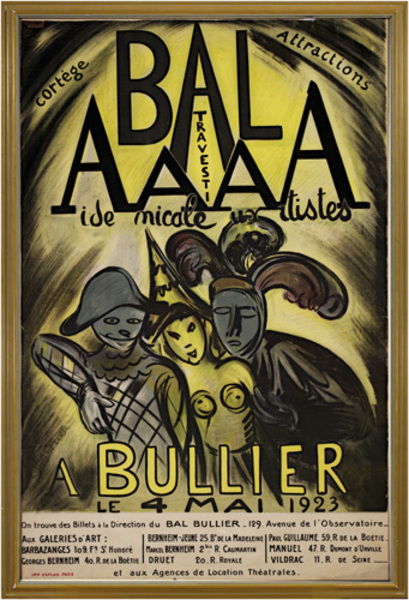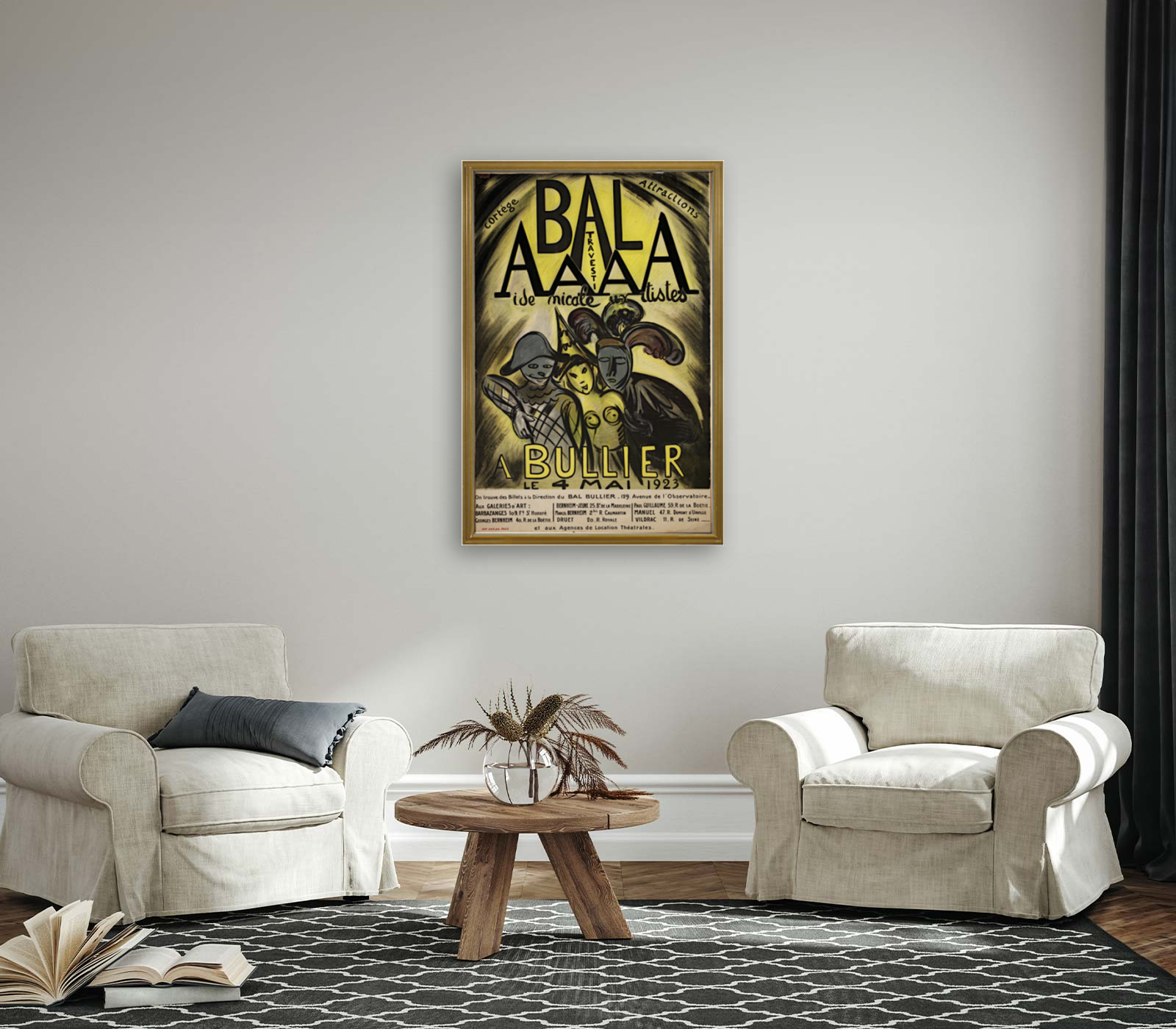Bal AAAA Bullier
Achille-Emile-Othon Friesz
Bal AAAA Bullier
Artist:
Achille-Emile-Othon Friesz
Medium: Prints
Price:
$8,410.00
Gallery:
David Barnett Gallery
Add to Favorites
Details
Creation Date: 1923
Materials: Original Color Lithograph Poster signed in plate lower left
Dimensions: 50" x 33" x 1"
Finish: Framed
About the Artist
Achille-Emile-Othon Friesz
Achille-Émile-Othon Friesz, who later just called himself Othon Friesz, was born in Le Havre in 1879. Early on he was encouraged by his parents to become a painter and as soon as 1892 he began training at the Ecole des Beaux-Arts in Le Havre, where he worked at Charles-Marie Lhullier's workshop. It was there that he met with Raoul Dufy and George Braque, with whom he developed a lasting friendships and travelled. In 1897 Friesz was granted a scholarship and studied until 1903 under Léon Bonnat at the École Nationale Supérieure des Beaux-Arts in Paris. He met Henri Charles Manguin, Albert Marquet, Henri Matisse, and Charles Camoin. His contact with Camille Pissaro especially influenced Friesz in that period of creativity. The painter made his artistic debut in 1900 at the Salon of the Société des Artistes françaises. Then he exhibited work in 1904 at the first Salon d'Automne and again in 1906 at the Salon des Indépendants. Over the years, Friesz abandoned his former nature-orientated subject matter in favor of works influenced by Fauvism. The artist travelled extensively, notably to Portugal in 1911 and to Belgium in 1912. Stays in Munich and Düsseldorf as well as the participation in exhibitions of the Berlin Secession made Friesz's work known in Germany as well. Friesz, who participated in exhibitions not only throughout Europe but also in the Armory Show in New York as well as in Chicago, taught between 1912 and 1921 at the Académie Moderne in Paris, from 1925 at the Académie Scandinave and from 1944 at the Académie de la Grande Chaumière. An outstanding late work is the decoration he did with Raoul Dufy for the Palais de Chaillot on the occasion of the World's Fair in Paris in 1937. Even though the artist used a more traditional, austere technique in his late works, several of his earlier works, especially from 1907, are regarded as the boldest examples of Fauvism.
About the Gallery
David Barnett Gallery
The David Barnett Gallery is Wisconsin's premier gallery with the broadest range of art available in the region, including works of art that represent more than 600 artists. The gallery specializes in European and American masters, regional and nationally recognized artists and emerging artists. This gallery also offers museum quality custom framing, restoration, conservation, appraisals, printing, transportation and delivery.
Similar Artworks
Similar Artists
More from this Seller







 Facebook
Facebook
 X
X
 Email
Email
























